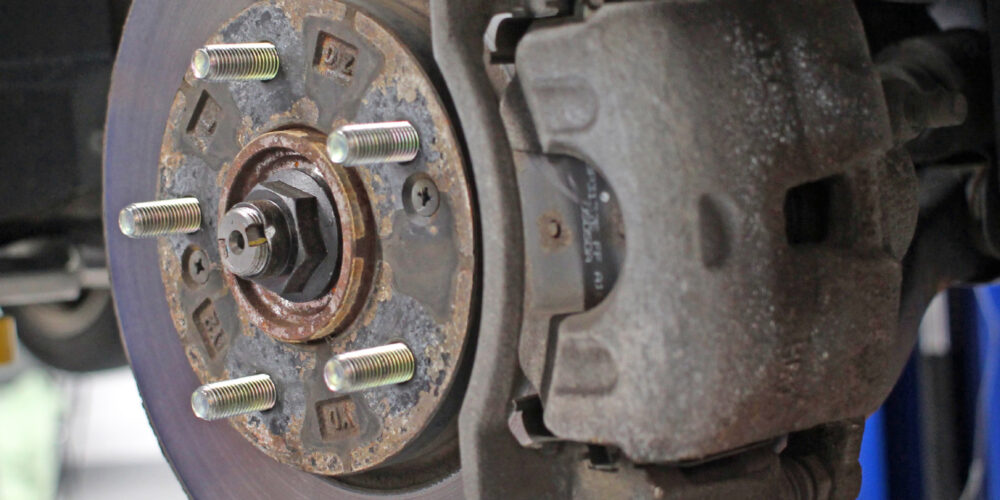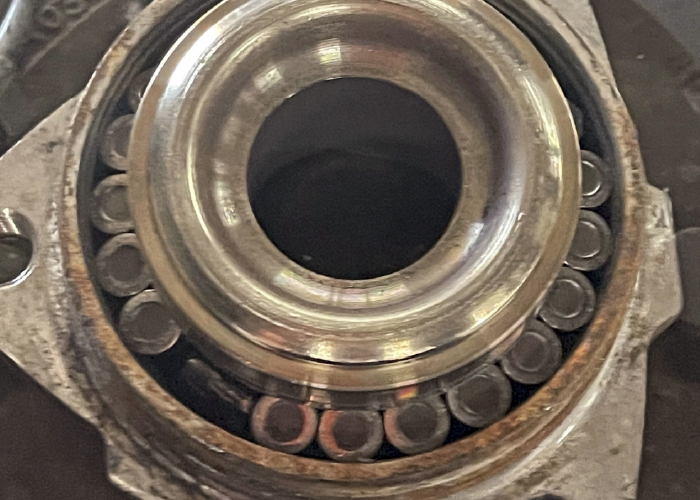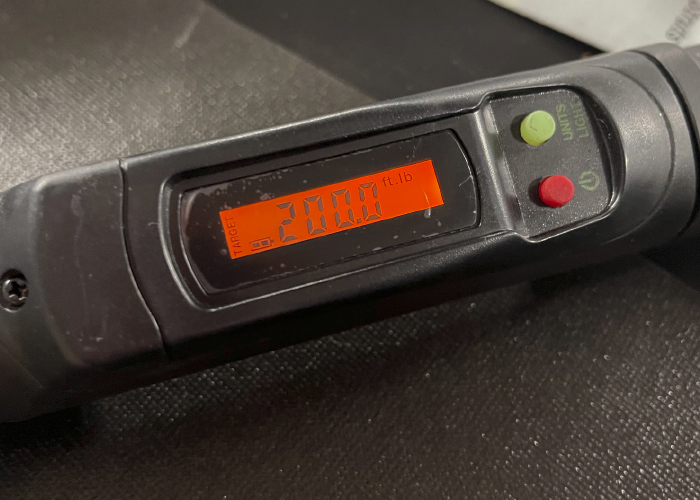The physics of all threaded fasteners are the same. As the bolt and nut are turned, the spiral threads convert rotational force into a linear force that creates clamping loads. When a threaded fastener is tightened, it stretches. Since metal is elastic, even greater clamping loads are generated. The threads also generate friction that keeps the assembly together. This especially applies to wheel bearings and axle nuts.
Clamping forces generate preload in a bearing. Preload is a force acting on the races and rolling elements of a bearing that creates a negative internal clearance. The geometry is also known as the “angle of pressure” for the bearing. The geometry is critical to handling radial, axial and lateral loads. The size and shape of the races and rolling elements control the geometry. If the angle of pressure is not optimal, wear and play can occur. The axle nut determines how the preload is applied.
Too little or too much torque on the axle nut changes the preload and geometry. A variance of 10 ft./lbs. can mean the difference between long bearing life or a failure in a few thousand miles. Guessing the correct torque setting is a bad idea.
Even if you are dealing with Gen-2 or Gen-3 wheel bearing hub units with the preload set at the factory, axle nut torque is critical because it will hold the stub axle of the CV joint. For some European vehicles, the axle nut is replaced with a bolt that secures flanges on the axle and hub unit. This introduces another torque specification called torque-to-yield or TTY.
With a TTY specification, you will see an initial torque specification followed by an angle in degrees. The extra step creates stretch and clamping force in a fastener. So, why do they use torque-to-yield fasteners? These fasteners can create significant clamp loads with smaller diameters and lighter fasteners. It accomplishes this by stretching the fastener using linear loads to increase friction on the threads. Torque-to-yield fasteners can be found on the bolts that secure the hub unit to the knuckle, ball joints and tie rod ends.
Depending on the application, some torque-to-yield fasteners can be used only once. Some torque-to-yield fasteners are one-time-use items because they can stretch and don’t snap back. As a result, some manufacturers will flat-out say they can’t be reused. Other manufacturers will specify that the fastener should be measured before being reused.
Lubricants on the threads can change the clamp loads and the torque specifications. For example, treating the threads with anti-seize or motor oil on an axle nut can reduce torque values by 20 to 30 percent.
TORQUE WRENCH TECH
No matter the type or brand of torque wrench, the device is designed to measure the torque being applied to a fastener. Chances are you have a torque wrench or two in your toolbox. It probably resides in the plastic case with the warranty certificate. Ask yourself, how much do you trust your torque wrenches?
In a shop setting, your torque wrench could have been borrowed and returned to its case without being wound down to the lowest setting. Not winding down the wrench to the lowest scale before storing it leaves the mainspring compressed. This can weaken the spring and cause false readings. In addition, going to zero or past zero can affect the calibration of the wrench.
Another common problem occurs when the torque wrench is dropped on the ground. Impacts with the shop floor can damage the internal mechanisms of the wrench. While one fall from a workbench may not damage the accuracy, repeated blows can cause a calibration problem.
So, how do you determine if your torque wrench is accurate? Some tool trucks have a torque wrench tester that can help spot a torque wrench that is malfunctioning. You must test several torque settings, including the highest and lowest settings. It is not uncommon to find a wrench that will be accurate at 50 ft./lbs., but significantly inaccurate at 25 or 150 ft./lbs. If the accuracy is off, you should send it out to be calibrated rather than buy another torque wrench. Annual calibration service is recommended by most torque wrench manufacturers.

















